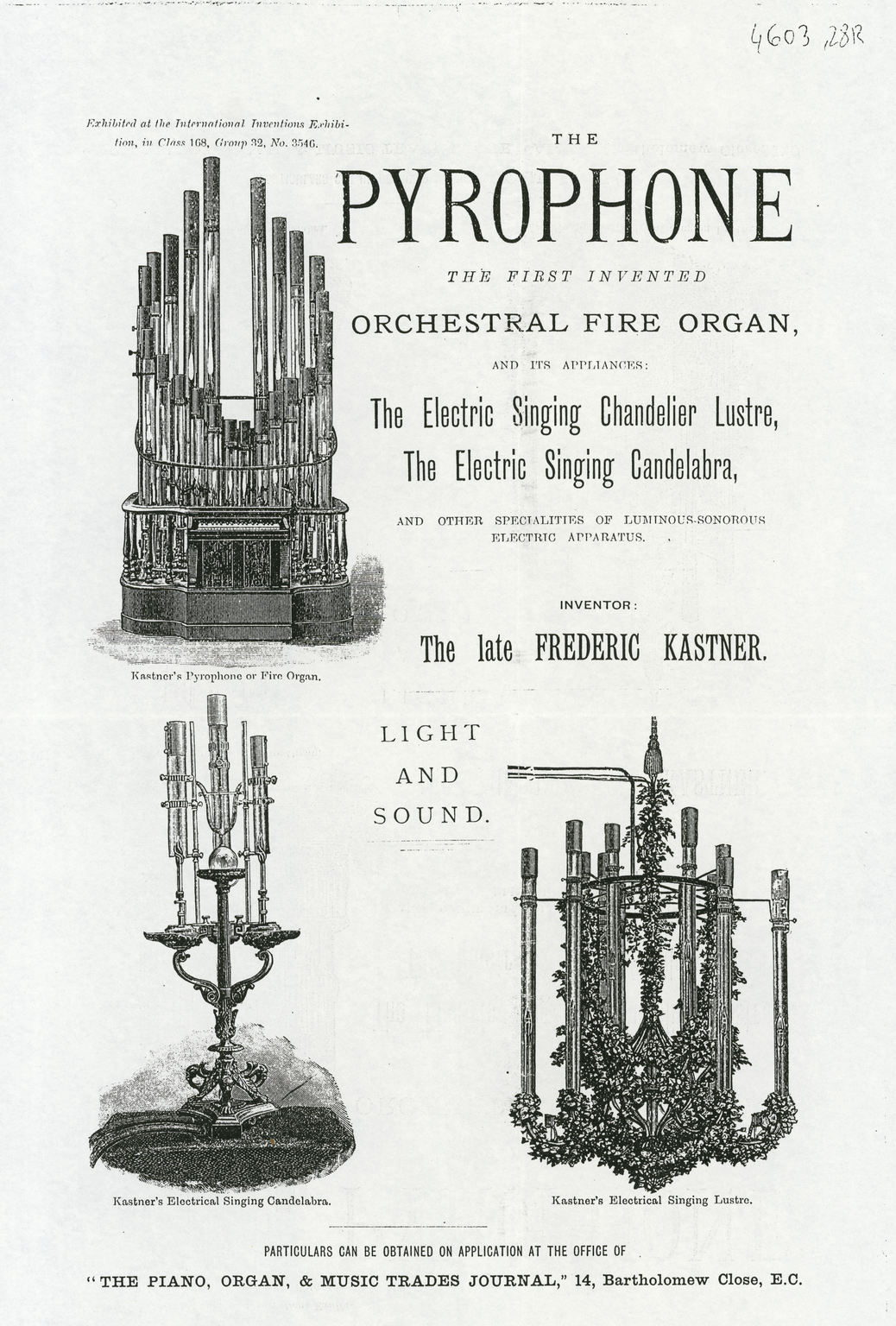There’s more to the relationship between fire and music than simply bad metaphors and innuendos, as I learnt this week at Blythe House.
In a dark corner of the Science Museum’s storage facility sits a small, awkward-looking wooden box with intriguing glass pipes sprouting out of it.
However, this unassuming little object just so happens to be one of the world’s last remaining pyrophones, an instrument which, as the name suggests, combines fire and sound!

Patented by the Strasbourg-born musician and scientist Fréderic Kastner in 1873, the pyrophone was a musical instrument in which flames encased in pipes similar to those of a traditional organ were used to produce musical notes.
Kaster took advantage of Dr B Higgins’ 1777 discovery that a hydrogen flame positioned at the lower end of glass tube could produce a note and combined this with his musical knowledge (his father was the composer Georges Kastner) in order to produce a “Fire Organ”, as the instrument was also known.
This name perhaps suits the device better than pyrophone, as it did in fact function much like any other organ, with the size and shape of the pipes regulating the note’s pitch and a keyboard acting as the musical interface.
The only real difference is that the pyrophone’s notes were produced not by air pressure, but through a quirk of combustion first discovered by Higgins.

Sadly, the pyrophone and its cousins the Electrical Singing Lustre and the Electrical Singing Candelabra did not set the musical world alight (with excitement).
Both Hector Berlioz and Cesar Franck visited Kastner in order to try the pyrophone, and Charles Gounod considered using it in a production of Jeanne d’Arc, but in general, the public’s reaction to the instrument was somewhat underwhelming.
The only composer to actually write any music specifically for the instrument was Theodore Lack who wrote several pieces, including an arrangement of God, Save the Queen that was later performed publicly.
Kastner wrote a book about his instrument and The Times also paid the pyrophone some attention, but the instrument’s success was limited.
To discover more about the pyrophone, its bizarre conection with the Red Cross and how it found its way into the Science Museum you’ll have to read the second part of The Amazing Adventures of Kastner’s Miraculous Pyrophone.